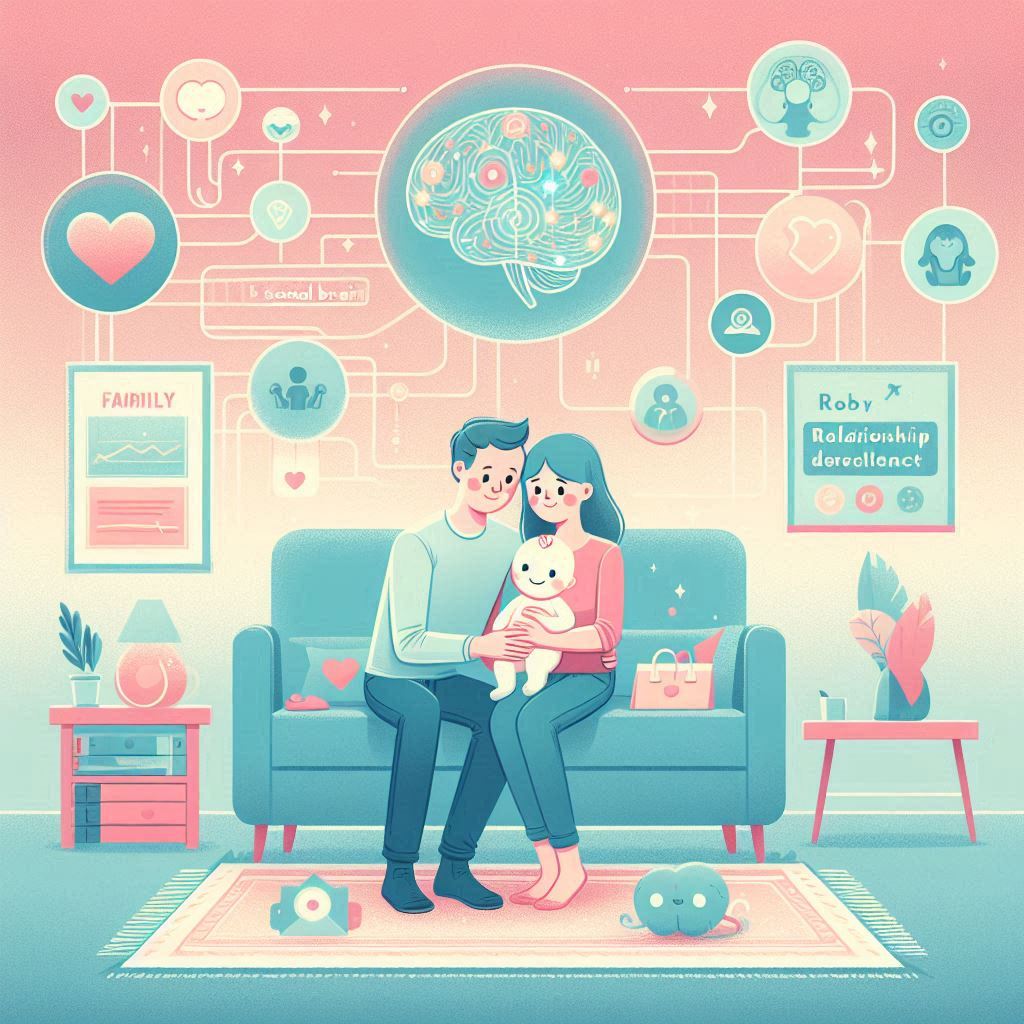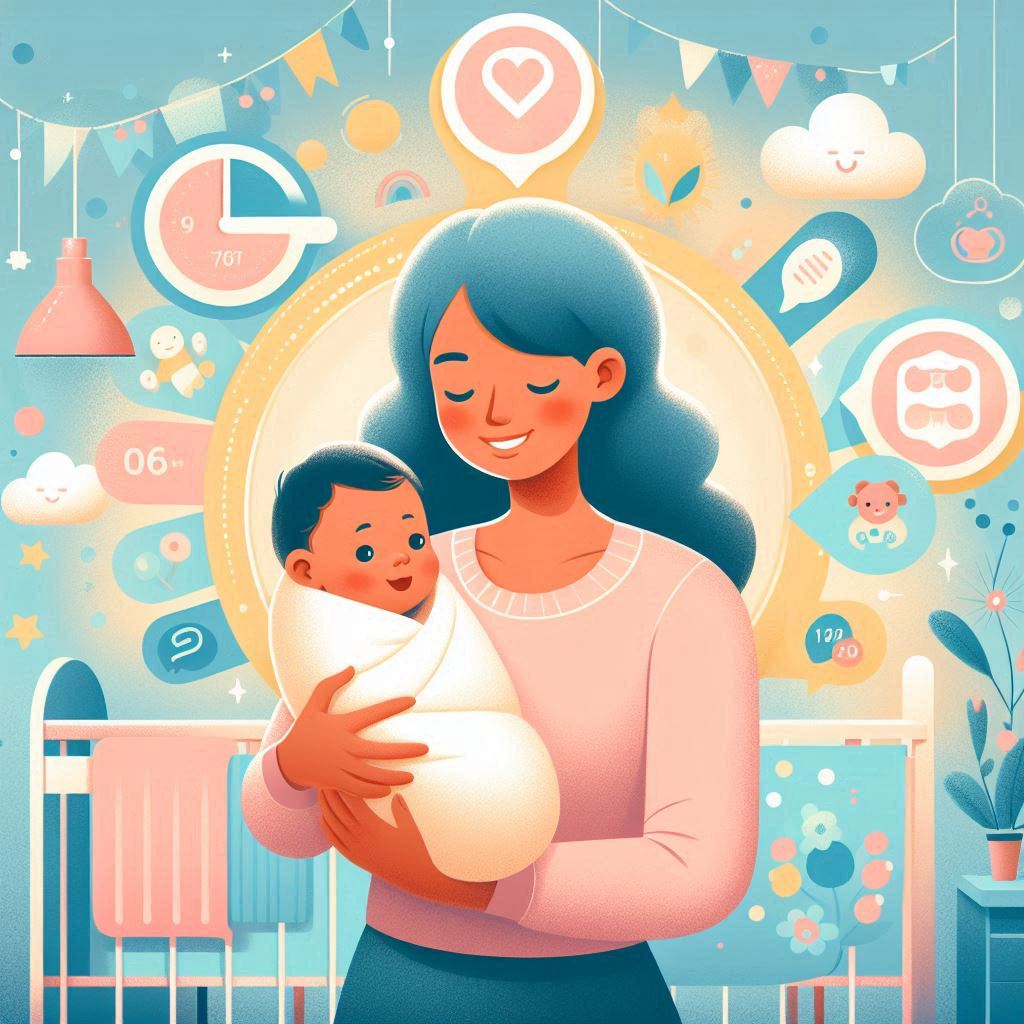As a first-time mom, I remember staring at my son’s tiny face, wondering if every cry or coo was a sign of something profound. Turns out, those early moments aren’t just cute; they’re building the foundation for how kids think, feel, and connect. Drawing from years of watching babies grow (both my own and through friends’ stories), plus insights from child psychology pros, this guide dives into what influences development. We’ll explore the child’s innate traits, their environment, and how early experiences set lifelong paths. Think of it as your backstage pass to the “social brain”—that amazing wiring that starts in infancy and powers everything from friendships to problem-solving. With a dash of humor (because parenting without laughs is impossible), some real-talk emotions, and tips to make it all actionable, let’s unpack how relationships turbocharge those four key domains: social understanding, attachment, emotion regulation, and cognitive skills. By the end, you’ll see why those baby giggles are more than adorable—they’re the spark for a resilient future.
Influences on Development
Every kid’s journey is a wild mix of nature and nurture, right? Your child’s own characteristics, like their temperament—whether they’re chill like a zen master or fiery like a mini volcano—play a huge role in how they handle emotions and self-control. Take my son; he was born with a stubborn streak that made bedtime battles epic, but it also fueled his determination to crawl early. Then there’s the continuing environment: the home vibe, daily routines, and even cultural norms that wrap around them like a cozy blanket, guiding how they interact with the world and build resilience.
Child’s Own Characteristics
Temperament isn’t just a fancy word—it’s the blueprint for how kids react to life from day one. For instance, a easygoing baby might sail through new situations, while a more intense one could struggle with overstimulation, affecting their emotion regulation and self-control down the line. I saw this with my niece; her bold personality made her a social butterfly, but it also meant learning to rein in impulses early on to avoid playground drama.
Continuing Environment
The world around a child doesn’t stop shaping them after birth—it’s an ongoing adventure of sights, sounds, and supports. From family dynamics to community resources, these elements can amplify a kid’s strengths or buffer challenges, like how a nurturing home helps a shy toddler blossom into a confident explorer. In my experience, switching to a calmer routine at home turned my fussy infant into a happier little learner, proving environment isn’t static—it’s a powerful ally in development.
The Role of Early Experience
Early moments aren’t just fleeting—they can directly sculpt skills like language learning or set a child on a pathway that influences how they engage with people and the wider world. Imagine dropping a pebble in a pond; that ripple effect starts with those first interactions, building neural connections that last a lifetime. My own “aha” came when my son babbled his first words after endless peek-a-boo games—it hit me how those playful exchanges weren’t just fun; they were wiring his brain for communication and curiosity.
The Social Brain in Early Development
When babies are helpless bundles of joy, their growth happens in the cozy nest of social relationships—the “social brain” at work. This network kicks in right away, helping infants read faces, share emotions, and form bonds that fuel everything from trust to teamwork. It’s like nature’s way of saying, “Hey, kid, you’re not alone in this big world—let’s connect!”
Four Key Psychological Domains
By age two or three, progress in social understanding, attachment, emotion regulation, and cognitive skills can predict how kids fare later, even into adulthood. These domains aren’t isolated; they’re intertwined, with early strides—like grasping others’ feelings or feeling secure—laying tracks for school success or healthy relationships. Studies show, for example, that strong attachment in infancy links to lower depression risks in teens, while early aggression might signal future challenges if not guided well.
Social Understanding
Social understanding blossoms as babies start to “get” others, sharing and cooperating in ways that forecast theory of mind skills and later friendships. By two years, kids who tune into emotions often become playground pros, reasoning with peers instead of resorting to grabs. It’s fascinating how this foundation turns tiny humans into empathetic little negotiators.
Support for Social Understanding
Carers boost this through mirroring—imitating baby’s expressions in fun games—or ostensive marking, like exaggerated eye contact to share the world’s wonders. Teasing playfully introduces mental play, while pretend games and chatting about feelings deepen it all. Bullet points of simple ways:
- Mirror smiles to build core relatedness.
- Use teasing to explore emotions lightly.
- Pretend play for imagining others’ minds.
- Talk feelings: “You look happy—me too!”
Attachment
Attachment forms that secure base, helping kids feel resilient amid life’s bumps, with early patterns predicting intimate relationships or even teen mental health. Securely attached babies bounce back faster, knowing someone’s got their back. My heart swells remembering my son’s clingy phase—it was exhausting, but it built that unbreakable trust.
Support for Attachment Security
Key people—parents, grandparents, or caregivers—respond when babies feel vulnerable, like during tiredness or fear, fostering security through consistent comfort. Signs emerge like separation anxiety around 7 months or stranger fear at 8-11 months, showing bonds are solid. During reunions in unfamiliar spots, secure kids seek comfort then explore confidently by 18 months.
Emotion Regulation
Emotion regulation is mastering those big feelings, learning self-control to handle frustration without meltdowns, and early patterns can predict adolescent behavior like aggression. Pervasive tantrums at two might linger if not addressed, but with support, kids turn storms into manageable showers. I chuckled (through tears) when my toddler threw a fit over a broken cookie—now, it’s a funny story of growth.
Support for Emotion Regulation
Mismatch repair—fixing those everyday disconnects—teaches coping, while body games build tolerance for excitement. Play fighting practices risky emotions safely, and routines offer predictability amid conflicts. Reasoning, discussion, and encouraging helpfulness harness impulses for good, like turning “mine!” into “let’s share.”
Cognitive Development
Cognitive skills cover attending, reasoning, learning, language, and motor actions, with infancy measures predicting academic success into teens or early twenties. Babies’ actions and explorations lay reasoning foundations, turning curiosity into lifelong smarts. Watching my kid stack blocks at one, I saw the seeds of problem-solving blooming.
Support for Cognitive Development
Contingency—responsive interactions like in the Double Video Experiment by Murray and Trevarthen (1985)—fuels attention and learning. Facilitation and scaffolding guide skills, while talking and book sharing boost language. The experiment showed babies thrive on live, attuned responses, frowning at replays—proving connection drives cognition.
Specificity of Effects
Here’s the cool part: each domain gets tailored support from carers, like custom tools for different jobs, which is gold for interventions. Social understanding thrives on play and talk, while attachment needs comfort in vulnerability—mix them up, and development might wobble. This specificity means targeted help, like emotion-focused games for regulation, can supercharge outcomes without overwhelming parents.
People Also Ask: Quick Answers to Common Curiosities
What Influences Child Development the Most?
Child development is shaped by temperament, environment, and early experiences in social relationships, with the “social brain” kicking in to build skills like understanding others and managing emotions.
How Does Early Experience Affect Long-Term Development?
Early interactions can directly boost areas like language or set pathways for social engagement, predicting outcomes from social competence to reasoning abilities in adulthood.
What Is the Social Brain in Infants?
The social brain is the network unfolding in helpless infancy through relationships, supporting domains like attachment and cognitive reasoning for resilient growth.
Where to Get Support for Child Development?
Seek pediatricians for personalized advice, online resources like the American Academy of Pediatrics website, or local parenting groups—books like “What to Expect” or apps for tracking milestones are great starters too.
FAQ: Your Top Questions Answered
How can parents support social understanding in babies?
Engage in mirroring games, teasing, pretend play, and talking about feelings to help babies grasp others’ minds—it’s like planting seeds for empathy.
What are signs of secure attachment in infants?
Look for separation anxiety at 7 months, stranger fear at 8-11 months, and confident exploration after reunions by 18 months—these show a strong, resilient bond.
Why is emotion regulation important in early childhood?
It helps kids manage difficult feelings and build self-control, reducing risks like persistent aggression and fostering cooperation for healthier teen years.
How do relationships aid cognitive development?
Through contingency in interactions, attention guidance, scaffolding skills, and book sharing, carers spark learning, language, and reasoning from infancy.
Where can I learn more about the Double Video Experiment?
Check developmental psychology resources or studies by Murray and Trevarthen (1985) for insights on how responsive caregiving boosts infant coping and attention.
Wrapping Up the Wonder of Early Growth
Reflecting on my parenting ride, those messy, joyful early days weren’t just survival—they were crafting my child’s world. From temperament quirks to the social brain’s magic, influences like relationships and environment weave a tapestry of social, attached, regulated, and clever kids. With specificity in support—mirroring for understanding, comfort for attachment, games for regulation, and talks for cognition—we can guide them toward bright futures. It’s not perfect (who hasn’t had a mismatch moment?), but embracing it with humor and heart makes the journey epic. If this sparked something, share your story—let’s keep the conversation alive, because raising tiny humans is the ultimate adventure.



One comment on “The Psychology of Babies- Decode Your Baby’s Mind”